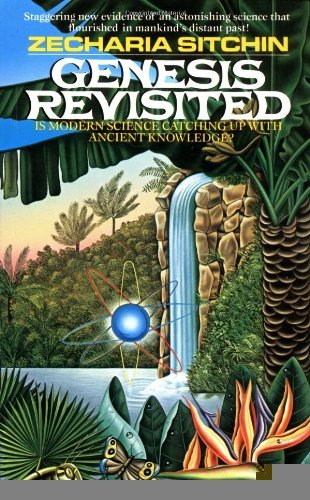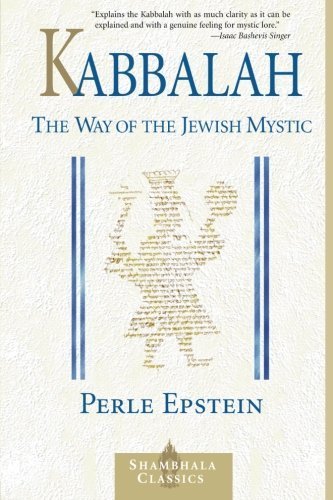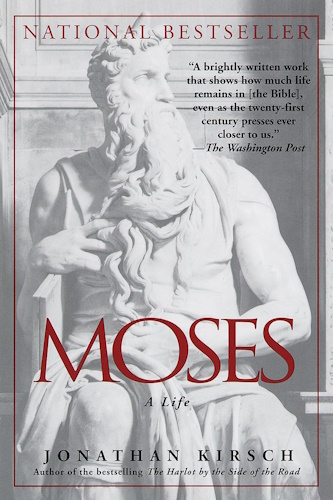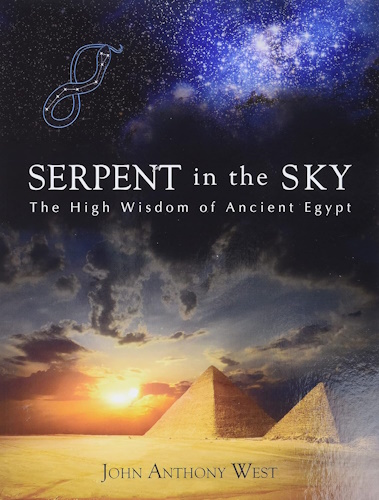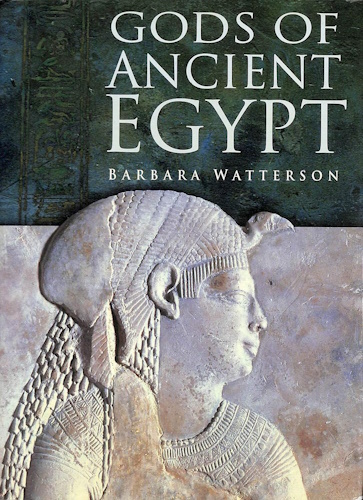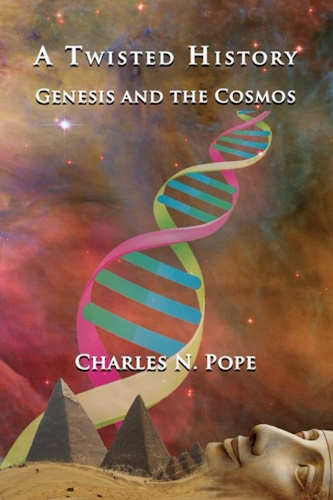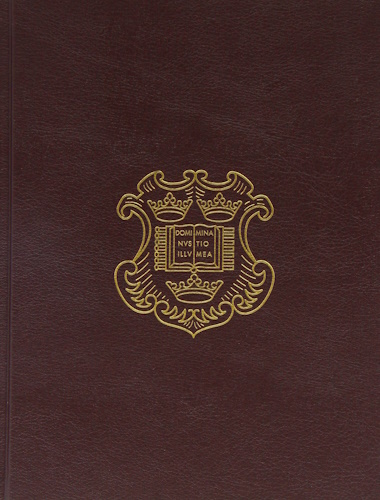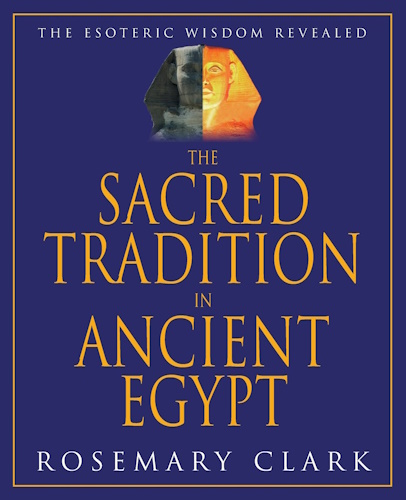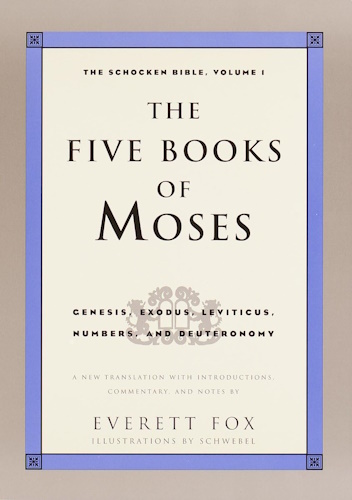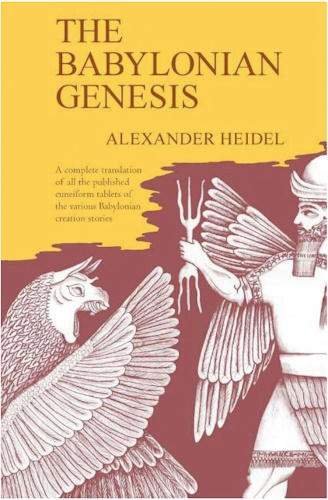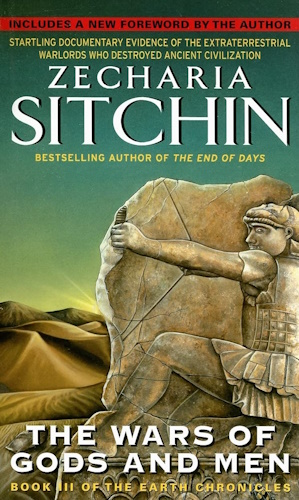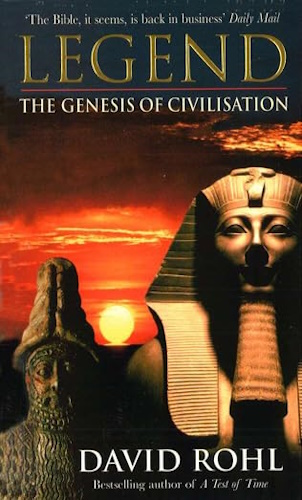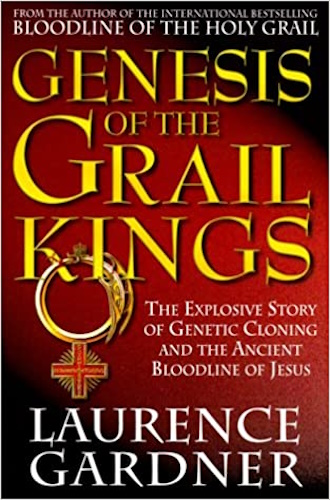![]()
"A Twisted History"
The Double Helix of DNA and Genesis
by
Charles N. Pope
![]()
The initial mapping of the human genome has taken less than 50 years since the discovery of the double helix of DNA by Crick and Watson. Yet, as we spiral head-long into the Genetic Age, it is not without a wrenching sense of deja vu. The Bible and other ancient histories may be very sketchy regarding the origins of man, but we know that this threshold has been reached before. As it turns out, the basic structure of life is not only a modern revelation, but certainly among the oldest. In the Bible, the creator of man is of course Yahweh. In Mesopotamian history, it is the god Ea who fashioned man from the clay. His name in the Sumerian language was Enki, "Lord of Earth," and his symbol was two serpents twisted together in the act of mating. In Genesis Revisited, Zecharia Sitchin writes (p 202):
"What did the emblem of entwined serpents - the symbol for medicine and healing to this very day - represent? The discovery by modern science of the double-helix structure of DNA ... offers the answer: the Entwined Serpents emulated the structure of the genetic code, the secret knowledge of which enabled Enki to create The Adam and then grant Adam and Eve the ability to procreate."
Sitchin explains that the Creation Story of Genesis is a highly condensed and stylized version of far older Sumerian and Babylonian accounts. For example, Genesis only briefly mentions the Elohim ("the gods") in passing. We must learn about the individual members of the ancient pantheon from Mesopotamian sources, and by comparing them with the mythologies of Egypt, Canaan, Greece, India and even China and the Americas. The Sumerian god first symbolized by the serpent was Enki. Although not the highest ranking member of the Sumerian Anunnaki (Biblical Elohim), it was Enki who lifted the burden from the gods by fashioning the servant Adam. However, Sitchin concludes from his study of the ancient texts that Adam was not made from scratch, but as a cross between the genes of an existing hominoid species and the gods themselves.
Sitchin further notes that this creator god was not only known by two major names in Mesopotamia (one Sumerian, Enki, and one Semitic, Ea), but also had two distinct names in Egypt. In Lower Egypt, he was called Ptah. However, in Upper Egypt he was Khnum, regulator of the annual inundation of the Nile. Both names, Ptah and Khnum, signify "molder" or "fashioner." Ptah is depicted "creating life on a potter's wheel." (Heike Owusu, Symbols of Egypt, p 85) The god Khnum of Upper Egypt was specifically "The Potter God," and was sometimes depicted as shaping a man or a king on his potter's wheel - a well known Biblical metaphor. As in the Mesopotamian account of Enki, the creatures made by Khnum could not reproduce on their own at first, but were later endowed with this ability. (Barbara Watterson, Gods of Ancient Egypt
, p 190)
Although this is not a blanket endorsement of Sitchin's complete body of work, many of his conclusions about the ancient pantheon can now be confirmed in the most spectacular way. The double helix or twisted pair was actually used as the fundamental literary structure of the Torah. Torah is customarily translated as "Teachings" or "Law." However, the ruling class of ancient royal society was conversant in many languages. According to the early 1st Century AD Jewish master Philo of Alexandria, Moses studied the languages of all 70 nations of the known world. (Jonathan Kirsch, Moses: A Life, p 65) The related roots "tor," "tort," "tur," "ter," etc. are found in many other tongues, including Greek and Latin. They are the basis of common English words such as tornado, torture, torment, torsion, turbine, storm, turban, tour, tower, turret and turn, all of which denote or imply "twisting." (Note 1)
Perle Epstein writes (p xvi-xvii) in Kabbalah: The Way of the Jewish Mystic, "In eleventh-century Spain a philosopher named Ibn Gabirol labeled these secret oral teachings 'Kabbalah,' or tradition." Although coined in the 11th Century AD, the designation was obviously the vestige of a much older tradition associated with the Torah and its underlying structure. Epstein continues, "Trying to practice kabbalistic 'meditation' without understanding its foundation in the Torah (the Pentateuch) would be like trying to fly without wings." The word Kabbalah is highly symbolic, and connotes much more than mere "tradition" or "received doctrine." The Hebrew chaba (khaw-baw') means "to hide." The Hebrew chabal (khaw-bal') means "to wind tightly (as a rope), i.e., to bind." Another Hebrew word, kebel, means "to twine or braid together." The Hebrew cabab means to "revolve, to turn (self about)."
Hebrew word definitions from Abingdon's Strong's Exhaustive Concordance, 1984.
The Torah does give one the impression that it is a history cobbled together somewhat clumsily from disparate traditions. However, there is an underlying method to the madness. The Torah is a hidden history. The title of Torah itself indicates hiding or encryption. It also embodies the nature of the encoding technique that was used, and is therefore a clue for its decoding. The "twisted history" of the Torah is extremely delicate and tightly interwoven, almost imperceptible to the naked eye. However, under the microscope of archaeology the separate components become quite distinct once again.
Twisting occurs on three main levels in the Torah. The first and highest level involves the nature of God himself. As mentioned above, it was Ea who is credited with the creation of Adam. Mesopotamian histories also venerate Ea as the god who acted to save mortal Noah (named there as Utna-pishtim) from the Flood. The Akkadian (Semitic) name Ea becomes Je/Jeho/Jo (Heb. Ye/Yehow/Yow) in prefix form, as in Jehu ("Jehovah is he"), Jehoshaphat ("Jehovah judged") and Joab ("Jehovah fathered"). In suffix form it becomes -iah (Heb. Yah/Yahuw), as in Biblical names Jeremiah and Hezekiah. But is it really that simple? It is simple, but not that simple. Although the name Yahweh patently derives from the earlier Ea (Yah), the Biblical deity became much more mighty (weh).
In Mesopotamian histories it is not Ea, but his more favored brother Enlil, who determined that both gods and men had sinned, and it was all going to come to an end. Ea was not the first or foremost among the ancient pantheon. Yet another god, Anu, is named as the superior and "father" of both Ea and Enlil. Although a great creator, Enki/Ea was not the "Great Creator." Biblical Jehovah is a supreme, universal and eternal being, to whom is attributed all previous creative works on Earth. In this respect, Jehovah is a greatly aggrandized deity with respect to Ea, Enlil or even Anu. Therefore, in Divine Encounters Sitchin rejected the notion that Yahweh could be any of those particular deities. (Note 2)
Nevertheless, it will be demonstrated here that in Yahweh the three primeval gods of the ancient world become the One. In fact, all eight of the major male gods of the ancient pantheon were merged in the cult of Amun at the beginning of the Egyptian Middle Kindom. A Leiden papyrus reads: The Eight gods were thy first form, until thou didst complete them, being One ..." (Note 3) By the end of native rule in Egypt, as few as only three or four of the original eight gods remained as an integral part of the cult. We will explore further the archaeological foundation for this theological construct later in a separate essay. But, first let us make a short study of the big three deities as they existed in separate form, and see if we can say: "It is good!"
Enki chose the primitive but symbolically rich emblem of the intertwined serpents. Over the millennia, the serpent came to be associated exclusively with evil. However, in ancient times, the serpent was a metaphor for duality, especially the duality of good and evil. (John Anthony West, Serpent in the Sky) The purity of the serpent's straight and narrow form is an inherent contrast to its crooked path and the duplicity of its forked tongue. The double helix formed from two serpents is an ideal symbol for the duality of life itself. As we now know, the DNA of two parents is first separated in the reproductive process. One strand from the father and one from the mother are then recombined to create a new life. Genesis 2:24 states, "a man ... shall cleave unto his wife: and they shall be one flesh. This is not crudely referring only to sexual intercourse, but also to the creation of one life from the genetic contributions of two.
In Egypt, the serpent icon stood for "a guardian spirit or a hostile force." (Rosemary Clark, The Sacred Tradition in Ancient Egypt, p 76) The lowly serpent strikes suddenly from the ground, or can ascend the loftiest tree and even "fly" among its branches in pursuit of a victim. In this regard, the serpent was a fearful deterrent to intruders. In addition to its other unique properties, male and female serpents have two sets of reproductive organs, which came to be associated with fertility. In Egypt, the serpent represented not only earthly but cosmic fertility. The sloughing and renewal of a serpent's skin symbolizes immortality and therefore, divinity. The progress of the serpent is comparable to the path of a seeker, and for that reason the serpent symbolizes wisdom. The serpent was characterized as wise and clever, but in a negative sense, also devious and beguiling. Genesis 3:1 states that "the snake was more shrewd than all ..." Intriguingly, we find in the Garden of Eden that the serpent-god Enki is not performing his expected role of guarding the Tree of Knowledge, but is actually inducing Adam and Eve to learn first hand about all of the things in their world.
The gods Enki and Enlil were dueling brothers. Enlil was a working god, attending to his throne. Enki was a playing god with creatures of his own. While Enlil was prohibiting, Enki was proliferating. While Enlil was concealing knowledge, Enki was searching out new things and revealing them, even to mortal men. Enlil represents authority. He considered it to be irresponsible and dangerous to create an intelligent new race of beings that could reproduce rapidly. Enlil especially did not approve of their initiation into the business and intimate company of the gods. The author of Genesis actually takes the side of Enlil in this matter.
The man and woman would not have hidden themselves from their benefactor, the "shrewd" Enki. However, they did have cause to fear the "prude" Enlil. It would have been Yahweh-Enki who prompted the man and woman to taste fruit that Yahweh-Enlil had forbidden. Fig-uratively speaking, it would also have been Yahweh-Enlil who asked, "Who told you that you are nude?" Shrewd and nude rhyme in English, but the Hebrew words used in Genesis are homonyms. (Everett Fox, The Five Books of Moses: Genesis, Exodus, Leviticus, Numbers, Deuteronomy, The Schocken Bible, Vol. I, p 16) This was itself a clever way of telling the discerning listener that it was the serpent, i.e., slinky Enki, who had made the husband and wife as the Wise.
In the mythology of ancient Egypt, the god who arrived first on the Earth was called Atum, signifying "totality." In the Bible, the first man is called Adam, meaning "a man, ruddy." However, Genesis 2:23 (KJV) states "she (Eve) was taken out of Man." The Hebrew word translated as Man is iysh (376), which is also commonly translated in the Bible as "every, everyone," i.e., all men, and also conveying a sense of both unity and totality. The Biblical place name Etham (spelled variously as attem in Hebrew) is of Egyptian origin, and may be related to the Hebrew words uwth (225), meaning "to come," and athah (857), "arrived." The Hebrew word atten (865) means "heretofore, yesterday, times past." According to Strong's Concordance, the Hebrew atham (6272) means "prob. to glow, i.e., (fig.) be desolated: - be darkened." Compare atham ("glow") with adam ("ruddy"). There is an obvious phonic similarity between Adam and Atum. A true linguistic link is also not so unreasonable given that the names of all of the other major Egyptian deities have definite Semitic etymologies.
Beginning with the story of Adam we have the introduction of a second type of "twisting" in Genesis. It involves the first two male "arrivals," but primarily revolves around a single mother, Eve. Ea/Enki devised a plan to create an intelligent helper or servant to the gods. However, the plan required the services of a birth goddess. It was the goddess Ninhursag who was asked to be the surrogate mother to mortal Adam. The ovum (egg) of an existing hominoid species (probably homo sapiens, but Sitchin concludes it was an ape woman) was fertilized artificially with the sperm of a young god and implanted in the womb of Ninhursag. This, with some trial and error we are told, is how the Adam was actually "created." Later, Adam was provided with a mate (mortal Eve) through the same process. A tablet dating to the 1st Dynasty of Babylon reads:
"The goddess they called, ... the help (?) of the gods, the wise Mami: 'Thou art the mother-womb, the creatress of mankind; Create Man that he may bear the yoke' ... Nintu opened her mouth and said to the great gods: 'With me alone it is impossible to do; with his help there will be Man. He shall be the one who fears all the gods' ... Enki opened his mouth and said to the great gods: ... Let them slay a god, and let the gods ... with his flesh and his blood Let Ninhursag mix clay. God and man ... united (?) in the clay ... "
Abridged quote from Alexander Heidel, The Babylonian Genesis: The Story of Creation
, pp 67.
In addition to being the birth mother of Adam, the goddess Eve (Ninhursag) was also called Mammi, the "mother of the gods." Other than Atum, most if not all of the gods and goddesses descended from her. As mother to both gods and men, she had another epithet, Nintu or Ninti, meaning "Lady Life." Sitchin defines Ninhursag as "Lady of the Mountainhead." This associates her with the cloud-kissed summits. In Egypt, this primeval goddess also had multiple names. She was called Hathor, meaning "House of the Falcon." The falcon flies higher up into the heavens than any other bird. Hathor was also called Tefnut, signifying "Moisture" and therefore, the atmosphere. Her primary consort was Shu, signifying "Dryness" or the air space itself. Shu was the Mesopotamian god Enlil, "Lord of the Air." As the consort of her other brother Ptah, Tefnut was instead called Neit, the "Warrior Goddess" and "Weaver of Forms." The Sacred Tradition in Ancient Egypt: The Esoteric Wisdom Revealed, p 65. (Also see Note 4)
Sitchin states that although the epithet Nin-ti means "Lady Life," it could variously be interpreted as "Lady Rib." This would then be the source of the Biblical account that from man (iysh), God made the woman (ishshah, the feminine form of iysh/Atum). The goddess Tefnut/Ninhursag was created alone from the Atum. However, as the first goddess, she may quite possibly have been mother or even grandmother to either or both Shu and Ptah before also bearing children to them. The gods possessed the secrets of longevity. They were called "immortals," but it was not believed in ancient times that they actually lived forever. Tefnut also aged, and was in her later years depicted as an ugly old cow. However, she would have maintained her beauty and fertility many times longer than normal women. Her dual roles of wife and mother or grandmother to Shu/Enlil and Ptah/Enki is not made explicit in the Egyptian or Mesopotamian sources. However, it is certain that mother-son conjugations did take place among the "First Ones," and were not in any way considered shameful. On the contrary, the children produced from such unions were looked upon as especially sacred by the royal family for centuries to come.
This was an age of innocence for both gods and men. What was possibly a necessity during that period of procreation was much later prohibited by law. It is of course a repulsive subject in this modern era, but necessary to discuss for the sake of historical completeness. Mother-son marriages were practiced not only by the gods, but emulated by royalty after the Deluge. Therefore, we will need to deal with this issue again. In the early Egyptian New Kingdom, Queen Ahmose-Nefertiry (Nefertari I) probably became the consort of her son Amenhotep I. (Note 5) Ahmose-Nefertari was, according to the renowned turn of the century archeologist Flinders Petrie, "the most venerated figure of Egyptian history." This was due in part to the great number of royal children that she bore. Her pet name was Tiy, in apparent identification with Ninhursag/Tefnut ("Lady Ti"). However, the mother-son relationship that can be most fully documented is that of the pharaoh Akhenaten and his mother, also known as Queen Tiy. Akhenaten and Tiy became the parents of Tutankhamun (See Essay #9).
Genesis 4:1 (KJV) states: "And Adam knew Eve his wife; and she conceived, and bare Cain, and said, I have gotten a man from the Lord." The Schocken Bible translates the last part of this verse as, "... I-have-gotten a man, as has YHWH!" The phrase "I have gotten" is the Hebrew kaniti, and a play on words with the name Cain/Kayin. The fatherhood of Cain is made deliberately ambiguous. We are once more tipped off to the double history by the choice of the word for "man," which is again the Hebrew iysh. Just as there were two Adam's and two Eve's, there are also two Cain's and two Abel's. The divine Cain was from the Atum. He was iysh (totality) from iysh (totality). The mortal Cain (dust from dust) struck down his brother Abel and his blood cried out from the ground. However, among the gods, Anu (Canaanite El) plays the role of Cain. According to the Hittite epic "Kingship in Heaven," Anu cast his more favored brother Alalu down "from heaven to earth." (Sitchin, The 12th Planet, pp 67-69) The mortal Cain was banished for his deed. On the other hand, the divine Cain (Anu/El) was celebrated for the triumph over his brother Abel (Alal), and was called "first among the gods."
Assyrian records state that Cain (Ka'in) was banished and built a city in the land of Nod (Dunnu/Nudun), presumably to the north-east of Eden. (Sitchin, The Wars of Gods and Men, p 112) However, the text of Genesis is ambiguous regarding whether Cain or his son Enoch built a city. (See David Rohl, Legend: The Genesis of Civilisation
, pp 198-9) The ambiguity is again deliberate, because a son of the divine Cain (Anu) founded the ancient world's first city on the south-eastern edge of the Fertile Crescent. This son of Anu is named in Genesis as Enoch, but in Mesopotamian lore as Enki. Enki called his city Eri-du(k), "City (of the) Son." The name Eridu can also be broken down as E-Ri-Du ("House-Ri-Son"). Translated more freely this becomes, "City of the Bright Son," or more literally, "City of Re, the Son." The son of Enki/Ptah was indeed named Re. In Babylon, Re was called Marduk, which can also be translated as "City of the Son." (Note 6) There is a close resemblance between the names Marduk and Eridu(k). More telling, the son of Enoch in the Bible is called Irad. The correspondence between these two names, Eridu and Irad, is even closer. Among the gods, it was not so much Anu (Cain), the father of Enki (Enoch), but his son Marduk/Re (Irad) who was the Brandishing Outlaw. The name Irad means "Fugitive."
After vanquishing his superior Alalu, Anu was then challenged by another rival named Kingu. Kingu was also defeated, but not before injuring Anu in the private parts. Anu retained his throne, but relinquished his reproductive function at least for a while. As noted above, Enlil and Enki assumed Anu's role of progenitor. In the Babylonian creation story quoted above, it was Enki who proposed using the blood of a slain god in order to make a slave of the gods. The sacrificed god is identified as the condemned rebel Kingu himself by the 3rd Century BC Mesopotamian historian Berossus. (The Babylonian Genesis: The Story of Creation, p 118) The name Kingu was also applied to the Moon, which orbits in perpetual servitude to the Earth. Sitchin concludes that it was only the blood of the slain Kingu that was used as a solution for fertilizing the mortal ovum with the divine sperm.
The choice of Cain (related to King-u) as the name for the murderous first son of Adam was deliberate. Adam and Eve were said to have been "conceived in [Kingu's] sin," and the "bad seed" kept "cropping up" with every new generation. The use of Kingu's blood was symbolic. The manufactured beings were to be "cursed" with Kingu's sentence of servitude. This is the first example of children being punished for the "sins of the father," a custom later prohibited by law as unjust. For lack of rain, the ground would not provide abundant yields for mortal Cain during the reign of the divine Cain (Anu). Although Kingu was killed, the Biblical Cain was given a protective mark. Mortal Cain would have been branded as the property of the gods. The god Cain would have displayed other insignia. In Genesis of the Grail Kings, Laurence Gardner identifies the latter as the emblem of divine kingship. The genealogy of divine Cain given in Genesis is that of the kingly succession among the gods known to us from archaeology.
The name Cain does not mean farmer, but a "smith." In a manner of speaking, farmer Cain beat his ploughshare into a sword in order to strike down his brother. This imagery reflects the author's bias that shepherding is a more noble occupation than farming. However, it is also a subtle denouncement of the great river cultures of Mesopotamia and Egypt. It was there that kings claiming descent from divine Cain put the yoke on their less fortunate brothers, especially for cultivating the irrigated fields of temple and state, and as conscripts in the military. In turn, those same kings came to see themselves as enslaved by a system that emulated the tragic cycle of the gods, and which was made all the more vicious given the shorter life spans of mortal men.
The structure of Genesis is a triumph in abstract thought, but very strange to the linear modern mind. It is a vestige of the "wide understanding" once kindly imparted by the gods to only a few, but gradually lost after they were dearly departed. The author of Genesis did not wish to reveal everything that was held true about the gods. Many of their ways were by then considered backward, embarrassing and even downright devilish. Nevertheless, it was still possible and desirable to find and express the deeper significance of their tenure. The genius of twisting traditions together is that the author could selectively hide his secrets and his ignorance. Only simple "truths" and morals can be grasped by the naive reader. For example, if the land is to be happy and blessed, then children must obey parents, parents their king, and kings their God.
However, for the initiate, a far more complex history and world of meaning is opened up. In Genesis, Enki is both creature and creator, and represents the cosmic cycle of life. Enki is first described as the most clever of all the creatures that God had made. Through his ingenuity, Enki himself then became a fashioner of men. Still later in the Genesis text, he is re-introduced as the builder of a city. Enki's city was a beachhead and home away from home for the gods. In time, it became a place for earthlings too. The gods came first. Man made in their image came next. However, the author of the Genesis narrative likely did not know the exact chronology or the precise genealogy of either.
For example, was the Egyptian god Atum one and the same as the Babylonian god Anu, were the two instead father and son, or were they possibly separated by thousands of years? If one and the same, why then would the divine Adam (Atum) be implicitly represented in Genesis as the father of the divine Cain (Anu)? That is, how could Anu be his own father? The mortal Cain would have been sired by his human father Adam in the usual way. However, according to ancient Egyptian theology, Atum was considered to be "self-created." One could argue that he was his own father, or had no father at all in the customary sense. At the time that the book of Genesis first took form, these are the kind of technical and philosophical discussions that would have livened up the halls of ancient temples.
Today, there is also growing interest and speculation about alien activity, past and present. For example, could Atum have developed from a frozen zygote after his transport arrived at its mission point, planet Earth? Even with our limited understanding of science, it seems possible for life to propagate artificially throughout the expanses of the Universe. Although we have ourselves only been in Space for less than a century, we are already sending out probes beyond the Solar System. By what "higher intelligence" and for what purposes new life forms have been intermittently "created" on our planet are not questions that can be answered here. It shall suffice for now to say:
The palm tree can reach a far away beach,
There's got to then be, in the cosmic sea,
Space traveling pods sent by hopeful gods,
With prize-winning spores, for our distant shores.
Footnotes
tur (variants twer and ster) to turn, whirl (e.g., turbine, storm)
turban, a scarf wound around the head
turn (root ter-2 to rub, turn; with some derivatives referring to twisting)
tower, a round structure
tour, literally "to make a circuit"
from Old French tour, turn, circuit, from Latin tornus (Cf Greek tornos) The diminuative or femine ending -et (which would be transliterated into Hebrew as "ah") implies a fine or tight twisting.
turret, "a small ornamented tower. military. A low, heavily armored structure, usually rotating horizontally." (e.g., a tank turret)Etymologies from New American Heritage Dictionary
In Divine Encounters, Zecharia Sitchin favorably compares the Mesopotamian god Ea (Sumerian Enki) with the Biblical Yahweh. Nevertheless, Sitchin ultimately rejects this association, because he finds in Yahweh attributes of other leading Mesopotamian gods, especially Anu (father of the gods and corresponding to the Canaanite El), Enlil (a strict disciplinarian) and Ishkur (a god of storms and mountains). Sitchin notes that the supreme god Asshur who became prominent in the Assyrian Period was not a new god, but a compositing of Enlil with his father Anu. However, Sitchin does not entertain the thought that Biblical Yahweh could have been the product of the same late 2nd Millennium BC theorizing by the same royal family.
From a Leiden papyrus translated by Alexandre Piankoff, Mythological Papyri, Bollingen Series XL, 3, Pantheon Books, New York, 1957, Vol I, Texts, p. 12. Quoted by Robert Temple in The Crytal Sun, p 365.
Neit and Tefnut have Hebrew derivations. Tef is the Hebrew tsaph/tseph meaning an extension or covering. Nut is related to Hebrew words netophaph (5199) "distillation" and natsah (5327) "expelled," as in water vapor/condensation. Natah (5186) denotes "stretched out" or "stretched forth," as the atmosphere is spread over the earth. The Hebrew word natash has a similar connotation to natah. The name of bellicose Neit can be derived from the same Hebrew words. Natash cited above denotes "smite, join (battle)." Natsah cited above connotes "desolate, be laid waste." Natah cited above connotes "overthrown, cause to yield." The matching connotations and denotations of these words link the two forms of Nut and Neit. In the case of Neit, also compare the Hebrew words nathaq (5420) "to tear up," and nathats (5422) "to tear down, destroy," and topheth (8611) "a smiting."
Cf Hebrew word taphar (8609) "sew" and Tefnut/Neit, goddess of weaving.
Cf The Canaanite goddess Anat, corresponding either to Neit, or to the Egyptian goddesses Nut or Nephthys.
Neit and Tefnut have Hebrew derivations. Tef is the Hebrew tsaph/tseph meaning an extension or covering. Nut is related to Hebrew words netophaph (5199) "distillation" and natsah (5327) "expelled," as in water vapor/condensation. Natah (5186) denotes "stretched out" or "stretched forth," as the atmosphere is spread over the earth. The Hebrew word natash has a similar connotation to natah. The name of bellicose Neit can be derived from the same Hebrew words. Natash cited above denotes "smite, join (battle)." Natsah cited above connotes "desolate, be laid waste." Natah cited above connotes "overthrown, cause to yield." The matching connotations and denotations of these words link the two forms of Nut and Neit. In the case of Neit, also compare the Hebrew words nathaq (5420) "to tear up," and nathats (5422) "to tear down, destroy," and topheth (8611) "a smiting."
Cf Hebrew word taphar (8609) "sew" and Tefnut/Neit, goddess of weaving.
Cf The Canaanite goddess Anat, corresponding either to Neit, or to the Egyptian goddesses Nut or Nephthys.
On a statue of Amenhotep I found at Qasr Ibrim, the name of Merit-Amun, wife of Amenhotep I, was erased and replaced with that of Ahmose-Nefertari. (James E. Harris and Edward F. Wente, An X-Ray Atlas of the Royal Mummies, 1980, University of Chicago Press).
Ri/Re means "bright" or "shining." Cf English words ray, radiate, etc. "Marduk" is translated by Sitchin as "son of the pure mound." This elicits the memory of the mound of creation, which arose from the watery chaos. A mound is also a tell, i.e., an elevated ancient city. Therefore Marduk again connotes "City of the Son." In Latin, the root mar signifies the sea, as in the English word marine. The Via Maris ("Way of the Sea") was the major road along the Mediterranean coast leading into Egypt. Eridu was also a city on the very edge of the sea, namely the Persian Gulf.
![]()
![]()
Disclaimer:
Some material presented will contain links, quotes, ideologies, etc., the contents of which should be understood to first, in their whole, reflect the views or opinions of their editors, and second, are used in my personal research as "fair use" sources only, and not espousement one way or the other. Researching for 'truth' leads one all over the place...a piece here, a piece there. As a researcher, I hunt, gather and disassemble resources, trying to put all the pieces into a coherent and logical whole. I encourage you to do the same. And please remember, these pages are only my effort to collect all the pieces I can find and see if they properly fit into the 'reality aggregate'.
Personal Position:
I've come to realize that 'truth' boils down to what we 'believe' the facts we've gathered point to. We only 'know' what we've 'experienced' firsthand. Everything else - what we read, what we watch, what we hear - is what someone else's gathered facts point to and 'they' 'believe' is 'truth', so that 'truth' seems to change in direct proportion to newly gathered facts divided by applied plausibility. Though I believe there is 'truth', until someone representing the celestial realm visibly appears and presents the heavenly records of Facts And Lies In The Order They Happened, I can't know for sure exactly what "the whole truth' on any given subject is, and what applies to me applies to everyone. Until then I'll continue to ask, "what does The Urantia Book say on the subject?"
~Gail Bird Allen
![]()
![]()

